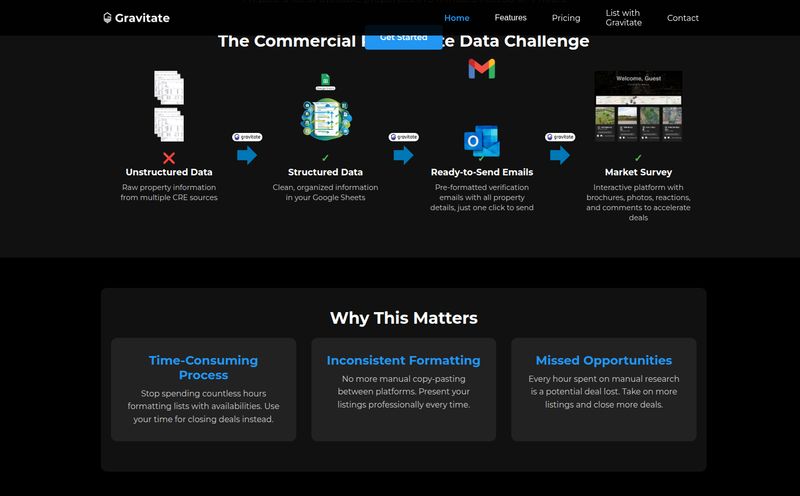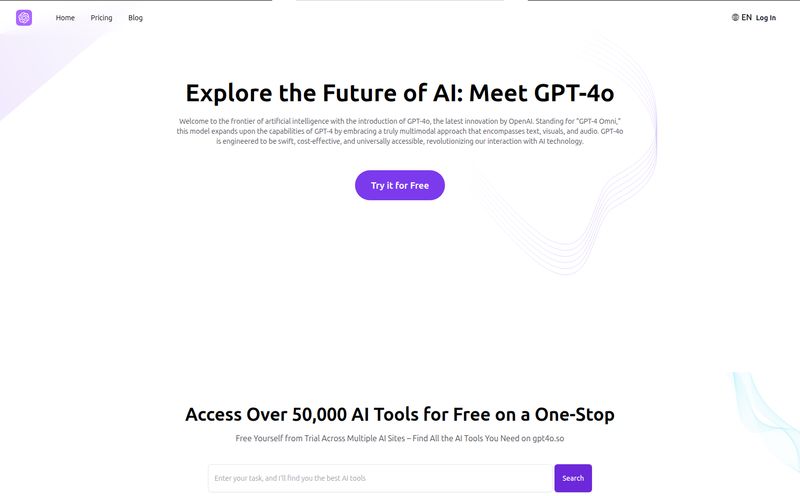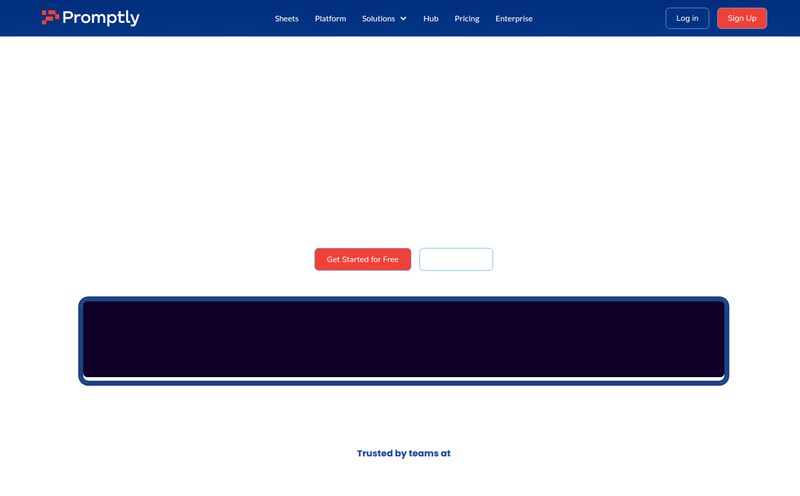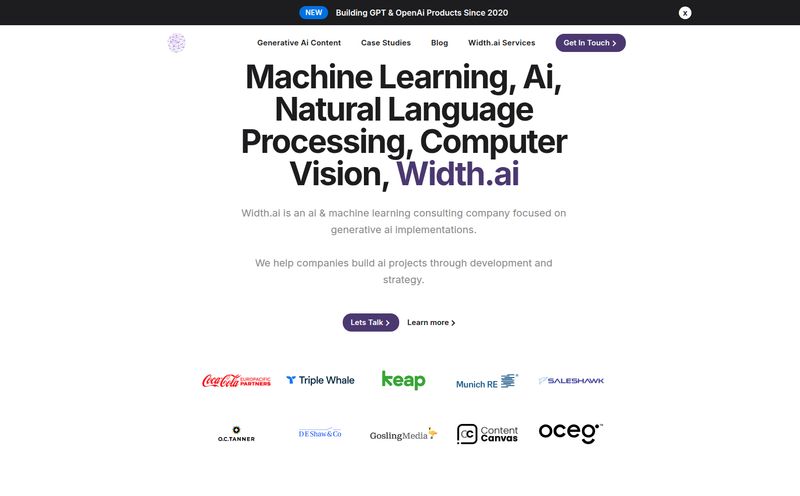If you run a prototyping shop or a 3D printing service, your daily workflow probably looks like a chaotic masterpiece. You've got project requests coming in through email, STLs and STEP files in a dozen different Dropbox folders, client feedback buried in chat messages, and a spreadsheet somewhere that's supposed to track your filament inventory. It’s like trying to build a spaceship with duct tape and hope. We've all been there.
For years, I've been patching together different tools—a little Trello here, a separate file viewer there, maybe a clunky quoting plugin—and just wishing someone would build an all-in-one platform that gets it. A platform built for the unique madness of additive manufacturing.
So when I stumbled upon Make-Print, my inner skeptic raised an eyebrow. Another 'revolutionary' platform? Sure. But after spending some time digging into it, that skepticism started to fade. This one... this one feels different. It feels like it was designed by people who've actually spent time in a workshop, smelling the fumes of melting PLA.
So, What Exactly is Make-Print?
At its core, Make-Print is a 3D management software platform. That's the official term, anyway. What it really is, is a central command center for companies that do prototyping and product development (PPD). It’s designed to take all those scattered pieces of your workflow—project tracking, file management, client communication, inventory—and put them under one clean, logical roof. The goal is simple: make your life easier, your shop more profitable, and your clients happier. A tall order, but they seem to be taking a serious swing at it.
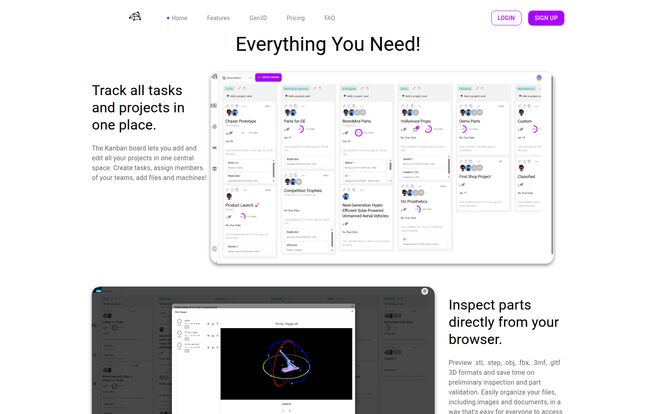
Visit Make-Print
The Features I'm Actually Excited About
Any platform can throw a list of features on a landing page. But which ones actually matter? Which ones solve the problems that keep us up at night? Here's my breakdown of the Make-Print tools that genuinely caught my attention.
A Kanban Board That Understands 3D Printing
I’ve used Kanban boards for years. Trello, Asana, you name it. They're great for general task management. But Make-Print's board is purpose-built. You can create project cards just like you’d expect, but here’s the kicker: you can assign specific team members, attach files, and—get this—assign specific machines from your inventory to a task. Knowing that the 'Hollywood Props' project is tied to the 'Replicator M3 Plus' is a level of detail I didn't even know I was missing. It connects the digital task to a physical asset in your shop. It’s brilliant.
No More Downloading! The Native 3D Viewer
Can we all agree that downloading a client's 3D file, opening it in a separate piece of software just to see if it's printable, and then switching back to your email to reply is a massive time-waster? Make-Print has a native 3D file viewer built right in. You can inspect .stl, .step, .obj, .fbx, .3mf, and .gitf files directly in your browser. This is huge for quick preliminary checks and part validation. It keeps the entire conversation and the files themselves in one place. No more “which version of the file did you mean?” emails.
AI That Actually Seems to Help
Okay, “AI” is the marketing buzzword of the decade, and I'm usually the first to roll my eyes. But the implementation here seems practical. Instead of some vague promise to 'optimize synergy,' Make-Print's AI assistant gives you real-time answers and daily briefings. Imagine logging in and getting a quick summary of all project updates, new client messages, and tasks that need your attention. It’s less about replacing human thought and more about cutting through the noise to tell you what to focus on. That’s an AI I can get behind.
Keeping Your Workshop Tidy with Inventory Management
How much Standard Resin in Clear do you have left? Is the Prusa available or is it tied up in a long print? Make-Print's inventory system lets you manage not just your 3D printers and CNCs, but also your materials and colors. You can add your custom machines and materials, track stock levels, and see everything at a glance. This moves you from reactive ordering (“Oh crap, we’re out of grey filament!”) to proactive management. For any shop trying to scale, this is not a luxury; it’s a necessity.
The Future is Here (Almost): Auto-Quoting
This is the one I’m holding my breath for. On their site, it says Auto Quoting is coming in Q3 2024. The system will supposedly analyze 3D models, factor in material costs, complexity, and your own shop's cost structure to generate a quote automatically. If this works as advertised, it will be an absolute game-changer. Manual quoting is one of the biggest time sinks and profit-leaks for any print service. Automating it accurately could fundamentally change how quickly you can turn around orders.
Let's Talk Money: The Make-Print Pricing Plans
Alright, this all sounds great, but what's it gonna cost? The pricing structure is actually pretty straightforward and, in my opinion, very reasonable. They’ve broken it down into four tiers.
For starters, there's a Free plan that's... well, free forever. It's not a trial. You get up to 20 projects, 3 users, and access to the 3D viewer and AI assistant. It’s limited, for sure, but it’s more than enough to get a real feel for the platform without dropping a dime. Perfect for a small team or a single operator just starting out.
The next step up is the Essential plan at $4 per user/month if you pay yearly ($5 if you go month-to-month). This bumps you up to 100 projects and 10 users, with unlimited storage and machines. This feels like the sweet spot for a growing shop that's starting to feel the pains of a disorganized workflow and needs features like customer invites.
Then there's the Business plan for $9 per user/month annually ($11 monthly). This gives you 500 projects, 30 users, and adds the holy grail: the Auto Quoting service once it launches. For any serious, established 3D printing business, this will likely be the plan to aim for.
Finally, there's a custom Enterprise plan for the big players who need unlimited everything and dedicated support. You'll have to contact them for a quote on that one.
Honestly, the pricing feels fair. They let you grow into the platform, which is a smart move.
The Good, The Bad, and The... Coming Soon
No tool is perfect, so let’s get down to it. What’s great and what’s not so great?
On the plus side, the integrated nature of it all is fantastic. The project management, 3D viewer, and team chat all living together is a massive win. The AI assistance seems genuinely usefull, and the inventory management is a must-have for scaling. The customer invite feature on the paid plans is also a great touch for improving the client experience.
On the other hand, the biggest feature—Auto Quoting—isn't here yet. It’s a huge part of the value proposition, so we're putting a bit of faith in them to deliver on that promise. Also, the Free plan, while generous, has some pretty tight limits on projects and storage that a busy shop will outgrow quickly. But hey, that's what free plans are for.
Who Is This Really For?
So who should sign up right now? In my view, Make-Print is perfect for small-to-medium-sized PPD companies and 3D printing service bureaus that are currently drowning in spreadsheets and emails. If you have a team of 2 to 30 people and you're managing multiple projects, clients, and machines, this could streamline your entire operation.
Who should pass? If you're a lone hobbyist who just prints for fun, this is probably overkill. You don’t need client management or complex team features. Stick with your slicer and a folder on your desktop. But for anyone running this as a business, even a side-hustle, the free plan is at least worth a look.
Answering Your Burning Questions (FAQ)
What makes Make-Print different from a generic tool like Trello?
While both use Kanban-style boards, Make-Print is built specifically for manufacturing. Key differences include the native 3D file viewer, the ability to assign physical machines to tasks, dedicated inventory management for materials like filaments and resins, and the upcoming 3D-model-based auto-quoting system. It's a specialized tool vs. a general-purpose one.
How easy is it to get started with Make-Print?
Based on the interface, it looks pretty intuitive, especially if you've ever used a modern project management tool. They have a free plan, so the easiest way to find out is to sign up and try to create a test project. The risk is basically zero.
Can I really request new features?
The FAQ on their site indicates yes! This is a great sign from a newer software company. It shows they're listening to their user base. I'd definitely take them up on that if you feel a crucial tool is missing.
How do I upgrade or cancel my plan?
Like most modern SaaS platforms, you should be able to manage your subscription directly from your account settings. Upgrading usually happens instantly, and you can typically cancel at the end of your current billing period (monthly or yearly).
Is the AI assistant just ChatGPT with a different skin?
While it likely uses a powerful language model on the backend, its value comes from being integrated with your project data. It can summarize your specific project updates, file changes, and team comments, which a generic chatbot can't do. It’s about context.
The Final Verdict on Make-Print
After looking at everything, I'm genuinely optimistic. Make-Print isn't just another task manager; it’s a thoughtful, purpose-built platform that addresses the real, specific pain points of the additive manufacturing world. It’s aiming to be the central nervous system for your entire print operation.
Is it perfect? Not yet. A lot is riding on the successful launch of their auto-quoting feature. But what's already there is a massive step in the right direction. With a robust free plan, there’s literally no reason not to take it for a spin. It might just be the tool that finally lets you ditch the duct tape and build your spaceship the right way.
